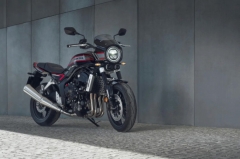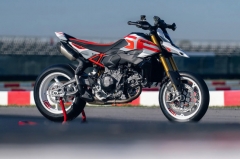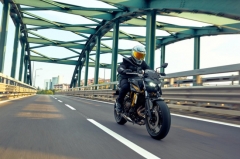
Up until just a few days ago, three-wheeled vehicles like the Bajaj RE and the Piaggio Ape occupied a gray area in the LTO’s vehicle classification system. Designated as a motorcycle with a sidecar, it’s clear to see that the aforementioned vehicles are not of this nature. Instead, they’re technically referred to as symmetrical three-wheeled vehicles which means they have two wheels at the front, and one wheel at the rear.
Technicalities aside, being classified as a motorcycle with a sidecar also has one major caveat: limited access to roads. Due to several factors, with safety taking center stage, vehicles classified as motorcycles with a sidecar are not allowed to traverse major roads and thoroughfares. However, symmetrical three-wheeled vehicles were designed as such, with the engineers putting safety into consideration.
It is with this in mind that Trimotors had been pushing for the revision of the three-wheeled vehicle classification system to be put in place for over three years. At last, after persistent efforts and continuous coordination with various government agencies, the LTO has released a memorandum that effectively revised the classification of such vehicles.
LTO Memorandum Circular No. 2020-2227 provisions Private and For-Hire three-wheeled vehicles — including Quadricycles — to be classified as either Motorcycle-Tricycle or Non-Conventional Motorcycle. These two main categories are subdivided and sorted into the following: three-wheeled vehicle, Light Quadricycle, and Heavy Quadricycle. Subsequently, the Motor Vehicle User’s Charge (MVUC) will then be determined depending on a vehicle's classification.

Perhaps the best part of the reclassification of three-wheelers is the fact that this opens up more access to roads where these vehicles were previously banned from passing. This is, of course, subject to the LGU’s discretion.
“Considering that specifications of these types of vehicles have advanced through time, operation of these vehicles along secondary national highways may be allowed if there is no alternate route designated by local government units (LGUs) and shall take the outermost lane or the rightmost portion of the road. In addition, with respect to the powers of LGUs in relation to traffic management, they may prohibit or allow the operation of these vehicles along roads within their jurisdiction.”
Despite still being quite a long way from being accepted as a mainstream category of vehicles, the new classification system is undoubtedly a step in the right direction as far as vehicle modernization is concerned. In cities like Tagaytay and other parts of Cavite and Laguna, vehicles like the Bajaj RE and the Piaggio Ape have pretty much taken over tricycles as far as public transportation is concerned. On top of this, the new reclassification system will effectively broaden several manufacturers’ product portfolios with brands like Harley-Davidson, Piaggio, and CFMoto known for their quadricycles and three-wheelers.
Latest News
-
Take a look at the new Honda CB1000F / News
Honda has revealed the production-spec CB1000F, blending retro style with Hornet-based performance and modern tech. Expected to hit UK showrooms in early 2026.
-
Ducati launches all-new Hypermotard V2 with cutting-edge tech / News
The Hypermotard V2 keeps its aggressive stance and signature beak while bringing sharper design and modern electronics.
-
2026 Kawasaki Z650 S gets more aggressive styling and premium tech / News
The 2026 Kawasaki Z650 S adds new styling, updated tech, and the same dependable 649cc engine loved by middleweight riders worldwide.




